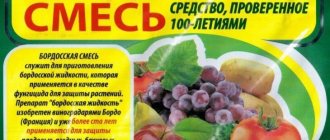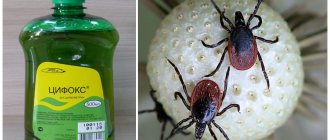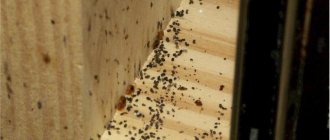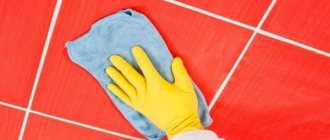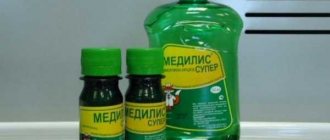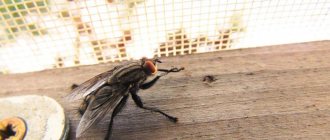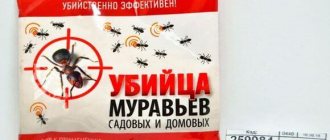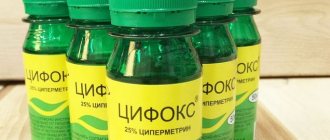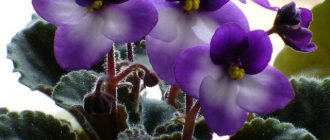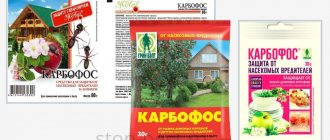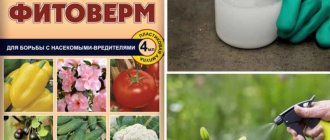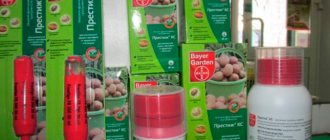For beginning gardeners, Bordeaux mixture seems somewhat incomprehensible and difficult to use. Experienced people will say that there is nothing complicated here. And they will be right. Having prepared it yourself for the first time according to these instructions, you will understand that everything is quite simple. The main thing is to prepare it correctly for the processing to be beneficial.
How to prepare Bordeaux mixture
The main active ingredient is copper sulfate, but its aqueous solution is a rather strong acid and can burn the plant when processed. In order to neutralize the effect of acid, lime is used - alkali.
In the original recipe, it is better to use quicklime, that is, the lime must first be slaked, and then the resulting mass must be used. It's much easier to do it differently. It is better to buy a special Bordeaux mixture. Here the required amount of vitriol and lime (fluff) has already been measured. The package contains 100 g of copper sulfate and 200 g of slaked lime.
This package is intended for preparing a 1% solution per 10 liters of water. If you are carrying out the first autumn spraying, then you need to prepare a 3% solution. This means that to prepare it, you need 3 such packets per bucket of water.
History of creation
Even in ancient times, people noticed that copper sulfate kills fungi of all types. It is not for nothing that copper sulfate is sold as a separate product in our time. It is used by builders and carpenters to treat wood against rotting. Wood impregnated with this substance is practically not subject to rotting and mold in damp places: basements, cellars, attics, bathhouses.
Treating logs and boards with Bordeaux mixture is not difficult, since the wood absorbs the copper compound well. The situation is more complicated with living plants that cannot retain copper sulfate on their leaves. For this, lime was added, that is, milk of lime. Slaked lime, together with copper sulfate, forms a new compound called Bordeaux mixture.
The developer of this mixture was the French botanist Pierre Marie Millardet. Initially, the find was used to protect and treat vineyards from the mold fungus Plasmopara viticola, which provokes the development of a disease such as downy mildew.
Nowadays, Bordeaux mixture is used in a wide range. In addition to vineyards, other plants are also treated with it against fungal diseases:
- Tomato and potato bushes from macrosporiosis, late blight;
- Vegetables such as cucumbers, onions, garlic, carrots from septoria, downy mildew, anthracnose;
- Berry crops such as raspberries, strawberries, strawberries from spotting;
- Fruit bushes and trees from rust, scab, fruit rot, powdery mildew;
- mildew (grape).
How to do it right
Prepare 2 plastic buckets, in one of them we will dilute vitriol, in the other - lime. Never use iron buckets to prepare solutions.
- First we dilute the vitriol. Pour 100 g (half a glass) into a bucket, first add a little water and stir. Shaking the bucket, let the powder dissolve. Then add up to 5 liters of water. For dissolution, it is better to use moderately hot water, so the powder will dissolve faster.
- Open the bag of lime. It's small in the bag. Naturally, if it gets on mucous membranes, it can cause a burn, so be careful and careful. It's better to breed. Putting a respirator or mask on your face. Carefully pour the lime into a bucket, add a little water, stirring with a stick so that there are no lumps. Then add the remaining 5 liters of water into the bucket. Mix thoroughly.
- When both solutions are ready, they are mixed. Pour vitriol into the lime in a thin stream, stirring constantly with a stick. When mixed it produces a beautiful blue color.
Don't get confused! Vitriol is poured into the liquid! And not vice versa.
Reviews
Sergey, 45 years old Ekaterinburg
“I have had my own summer cottage for 15 years. Every year I plant plants - tomatoes, potatoes, beets, carrots, onions. In addition, there are many fruit and berry trees growing on my site. Yes, and there are grapes too.
Of course, it’s wonderful to have your own vegetables, fruits and berries, but in the first year I encountered an unpleasant problem - fungal infections of plants. I struggled with them for a long time. I did treatments, sprayed the entire area, but for some reason they did not bring the desired result. As a result, the yield decreased significantly.
One day on the Internet I read about such an effective remedy as Bordeaux mixture and decided to try it next year. Once early spring arrived, I gave all my trees a full treatment right before flowering.
I also treated with a weak solution in the summer. As a result, my plants do not get sick, and I get good harvests. I use this product all the time and recommend it to everyone!”
Irina, 48 years old, Krasnodar
“My husband and I have a private house, and there is a vegetable garden in the yard. We have been planting vegetable crops for almost 20 years, and we also have many fruit and berry plantations and flowers. Every year we are faced with problems such as fungal infections of plants, which cause a lot of trouble.
At first we could not completely exterminate them and as a result they reduced the yield, and some plants simply died. For a long time we could not find an effective remedy against these lesions. But somehow friends advised me to try Bordeaux mixture. Right when spring arrived, we treated all our trees with a 3% solution.
We also sprayed the plants with a 1% solution throughout the summer. As a result, our plants stopped getting sick, and the harvest became very good!”
Oleg, 54 years old, Kirov
“I have been growing fruit and berry trees for a long time. There are also a large number of strawberries and raspberries growing on my plot. At first, it took a long time to eradicate various plant diseases, which were very harmful and reduced productivity.
What I didn’t try then, various mixtures, preparations, powders. But for some reason they didn’t help much. Then my relatives gave me a Bordeaux mixture to try. After the first spraying, I began to notice that the diseases began to go away.
After 3 sprayings the plants became completely healthy. As a result, the harvest was good. Now I treat my area with this drug every year. He is the best!"
Svetlana 34 years old, Samara
“I have been growing vegetables, strawberries, fruit and berry plants for 5 years now. I always dreamed of having everything that was my own and natural. So I bought a dacha and decided to grow vegetables and fruits. However, in the first year I encountered such an unpleasant problem as fungal infections. They were especially pronounced on raspberries, strawberries, grapes and tomatoes.
My husband and I struggled with them for a long time, but for some reason modern medications did not help. We sprayed and sprinkled with powder mixtures, but in the end the diseases did not subside. One day I found a Bordeaux mixture in a specialty store and immediately decided to try it.
After 3 sprays our plants looked like new. As a result, our yield has increased. Now we use this product every year to treat our site. I recommend it to everyone, it’s a great mixture!”
Bordeaux mixture is an indispensable assistant for combating various fungal diseases of plants in a summer cottage or vegetable garden. It can completely eliminate them and increase the yield.
But during its use, you should follow the recommendations for its use, and you should not forget the concentration of the solution. Do not forget that excess copper sulfate can harm plants.
Application in horticulture
A 3% solution of Bordeaux mixture is used for early spring treatment, when the buds have not yet swelled. The same concentration is used for late autumn treatment at the end of November. The dates are different in different regions, March - April. The rest of the time, spraying is carried out with a 1% solution. The frequency of treatment, concentration and what it is used for can be seen in this table.
Security measures
When working with such a solution, you should adhere to safety rules. For humans, Bordeaux mixture is moderately toxic. During preventive maintenance you should wear:
- respirator,
- glasses,
- latex gloves.
If this solution enters the gastrointestinal tract, weakness, dizziness, nausea, loss of appetite, vomiting, abdominal pain, thirst, and indigestion occur. Each person's reaction to contact with the mixture may be different. There is a chance that the temperature will be below 36 degrees. It is recommended to rinse the stomach with warm, boiled water. Without using a respirator, you may feel chills, irritation of the larynx, fever up to 39 degrees, and sweating.
Useful tips
Observe the concentration of the prepared liquid. An incorrectly prepared solution of Bordeaux mixture, for example, when using your own lime, the concentration may be impaired. By treating plants with this solution, you can burn the leaves. If the concentration is less, you will not get the expected result after treatment. This can be checked using the litmus test included in the package.
The reaction must be neutral or slightly alkaline. This will be indicated by the paper turning blue. If it turns red, add some milk of lime to the solution and test again.
You can check the correct concentration of the solution in a simple way. Dip any iron object (nail, wire, knife, etc.) into the liquid. If there is excess copper, then red spots will remain on the surface - traces of copper. If not, then the solution is normal and can be used.
- When mixing, the solutions must be cooled, so you get a good working solution.
- It is forbidden to add water to a ready-made working solution.
- Spraying is best done using a special sprayer.
- Before spraying, be sure to filter the working solution.
- When spraying, wear protective clothing, gloves, a respirator or mask. After carrying out work, remove protective clothing and be sure to wash your hands and face.
- Use the prepared solution on the day it is prepared. The next day, the beneficial properties of the insecticide are lost.
- The treatment is carried out in dry and cool weather, since high humidity can cause leaf burns.
- Before treating with Bordeaux mixture, it is advisable to thoroughly wet the entire plant so that the liquid flows into all the cracks in the bark. This is where the largest number of fungi and bacteria, as well as pests, accumulate.
Precautionary Techniques
When using the solution, it is important to adhere to safety rules. In this case, the following rules should be observed:
- Use personal protective equipment. In this case, you should use gloves, a hat, special clothing, and a respirator.
- Do not drink, do not eat, do not smoke between sprays.
- Do not spray the composition close to fruits, berries and vegetables that are planned to be collected in the next 2-3 weeks. Before consumption, thoroughly wash fruits, vegetables and berries.
- Do not apply treatment during the flowering period of plants.
- Do not treat plants in strong winds, heavy dew or during precipitation.
- Do not mix Bordeaux mixture with other substances, as this will reduce the effectiveness of the product.
- Do not add soap solution to the composition to improve adhesion. This will reduce the effectiveness of the drug.
- The last spraying should be carried out 2 weeks before harvesting.
Analogues of Bordeaux mixture
For beginners, diluting and using Bordeaux mixture will seem difficult. Therefore, people often ask whether there are similar fungicides that are easier to use and no less effective. There are drugs on sale:
- Abigo-peak,
- Cuproxat,
- Home.
The price of such drugs is not high, and they are no less effective. There are other, more effective drugs that “treat” the plant from the inside. Of course they cost a little more. These include Oxychomus and Polychomus. The advantage of using them is that they can be mixed with pest control products, as well as stimulants and fertilizers. Of course, Bordeaux mixture cannot work like that; it cannot be mixed with anything.
There are drugs that are much stronger than Bordeaux mixture: Strobi, Kvardis, Skor, Ridomil, Akrabat and Vectra.
A ready-made solution of Bordeaux mixture is also available for sale - a concentrate in a bottle.
For use, the ready-made water-suspension concentrate is diluted with water according to the instructions for use. In this case, there is no need to separately dilute the components, combine them and check the correct concentration. Have a good harvest!
Possible mistakes
When using Bordeaux mixture, many gardeners make some mistakes. This provokes negative consequences. The most common problems include the following:
- violation of dosage - the concentration of the active substance more than 3% poses a danger to plants;
- use of a large amount of substance during processing;
- neglect of personal protective equipment;
- processing of crops during flowering;
- processing of vegetables and fruit plants before harvesting.
It is important to consider that processing plants during the flowering period does not harm the crops themselves, but the bees. Copper sulfate, which is part of the drug, kills insects. This has a bad effect on pollination and leads to a decrease in yield.
Cooking method
Bordeaux mixture can be purchased in specialized stores in the form of a water-suspension concentrate (WSC). The volume of the plastic bottle varies from 100 ml to 500 ml. To prepare a working solution, simply mix the contents of the bottle with clean water in the proportion indicated on the package. To obtain 1% liquid, you need to dissolve 100 ml of concentrate in 10 liters of water. To prepare a 3% working solution, you need 250 ml for the same amount of clean water.
Most often, gardeners prepare Bordeaux mixture on their own at home, using 3 ingredients. Depending on the crop being treated, the growing season and the purpose of spraying, a 1% or 3% solution is used.
Ingredients
On sale there is a one-component and two-component mixture for self-preparing protective equipment. In the first case, copper sulfate and lime are already mixed and packaged in a plastic bag. During storage, air and moisture penetrate the film, so the powder often contains lumps. Before diluting the dry mixture with water, it should be crushed until smooth. The resulting liquid can only be used for spraying with a broom or brush. The spray bottle quickly becomes clogged and stops functioning.
It is better to purchase components packaged separately. The kit includes sealed bags of copper sulfate and lime, as well as a litmus strip to monitor acidity levels. In addition, the packaging contains instructions for use, which should be followed when preparing Bordeaux mixture.
Utensils and protective equipment
The mixture must be prepared in enamel dishes or plastic containers. Metal buckets and pans cannot be used; their surface will react with the active ingredients and lead to the formation of a harmful substance. Copper sulfate and quicklime are initially mixed with water separately, so 2 containers should be prepared.
You can only start working with substances wearing gloves. It is recommended to take care of eye and respiratory protection. Otherwise, you may get burned or poisoned.
Step-by-step cooking instructions
1% Bordeaux mixture is prepared from 100 g of copper sulfate, 100 g of lime and 10 liters of pure water (not distilled). The process consists of several sequential steps:
- Pour copper sulfate into a prepared container and add 500 ml of warm water (40-50 °C).
- Stir with a wooden spatula until the crystals dissolve. You should get a clear blue liquid without sediment at the bottom.
- Add 4.5 liters of warm water, stirring constantly until the components are completely combined, cover with a lid.
- Pour lime into a container or bucket, “quench” 5 liters of hot water, stir thoroughly and strain. The result should be lime milk without lumps or sediment.
- Pour a warm solution of copper sulfate in a thin stream into the slaked lime. While adding, constantly stir the liquid until a homogeneous blue mixture is formed.
The pH level of properly prepared Bordeaux mixture is 6.5-7.5. To determine acidity, in addition to litmus paper, a nail is used. If after immersion a copper coating appears on it, it is necessary to increase the content of lime milk.
To prepare a 3% Bordeaux mixture, measure 300 g of copper sulfate and 400 g of quicklime per 10 liters of water. Mix using the same technology. More information on how to prepare a spray solution is described in the video:
Mode of application
To get the maximum effect and not harm the plants, you should pay attention to a number of points:
The product is used completely within 2-3 hours. There is no point in leaving the finished mixture for later use, because... it quickly loses its properties. Children and pets should not be in the area where work with Bordeaux mixture is carried out. Spray the plants on a windless day, at least 3 hours before rain. In sunny weather, spray in the morning (if there is no dew) or in the evening, after the sun leaves the area. This will avoid burning the leaves. Spray the solution over the entire surface of the shoots, including the back of the leaves and in hard-to-reach places
It is important to avoid liquid getting into the ground
Spraying is carried out during any growing season. The use of Bordeaux mixture in gardening is especially widespread in the spring, before the buds swell and in the fall, when perennial crops begin to prepare for the dormant period. At this time, the plants are treated with a 3% solution, and during the period of active shoot growth - with a 1% liquid.
Features of use and disadvantages: what is important to know
- Bordeaux mixture is not compatible with any protective agents other than colloidal sulfur.
- You should not use soap as an “adhesive”: an alkaline environment will shift the pH of the mixture.
- The use of copper-containing fungicides inhibits the growth of grapevine shoots and dries out the bark of rootstocks.
- The mixture can cause burns, netting on the fruits, and yellowing of the leaves.
- Frequent processing provokes phyllostictosis on the apple tree.
- Some varieties of grapes, berries, roses, apricots, and cherries are prone to burns - use copper-containing analogues HOM, Kuprosat, etc.
- Frequent use leads to an excess of copper salts in the soil.
A short-term effect can also be called a disadvantage: on an apple tree, the mixture provides protection from the same scab for 6-8 days. The protection time of eradicating spraying is up to a month, but it is worth considering possible burns.
Considering such negative reviews as inhibition of vine growth, drying out of the bark, and incompatibility with protective agents, winegrowers more often choose fungicides that do not contain copper or that are gentle on copper. And not every gardener today will go for total irrigation of apple trees in the garden and potatoes in the garden with vitriol. People think about the product when it is necessary to eradicate spraying, in search of an extremely inexpensive drug. And, in general, effective - this cannot be taken away from a mixture from Bordeaux.
Negative soil changes
Copper contained in some chemicals, including Bordeaux mixture, quickly accumulates in the soil and is slowly removed from it. This causes slow growth of cultivated plants, the formation of a large number of lateral branches on their roots, a noticeable reduction in yield and even death. That is why the use of Bordeaux mixture in gardening in spring and autumn should be carried out in strict accordance with the recommendations on the packaging.
